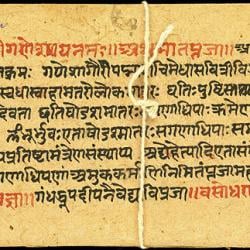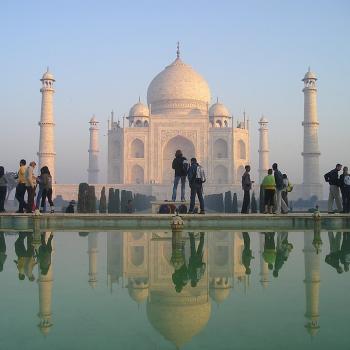Navratri 2014 is being celebrated from September 25 to October 3, with October 3 being the final day of Dussehra or Vijayadashami. Navratri is preceded by Mahalaya Amavasya, also known as Pitru Paksha, which falls on the first new moon or Amavasya following the autumn equinox, and is dedicated to one’s ancestors. Various processes are conducted to help us express gratitude to the generations that preceded us, and in many ways are the reason we are here today.
Navratri begins immediately after Pitru Paksha, and the nine nights are dedicated to the worship of the goddess in her many forms. The tenth or final day is Dussehra, a day of victory that marks the dispelling of darkness, and an opportunity to rise beyond physical limitations. For Devi or goddess devotees, Navratri is a special time, with many rituals and practices.
Worshiping Devi
Songs by Sounds of Isha, in praise of Linga Bhairavi Devi.
Navratri marks the beginning in the Indian calendar of what is known as Devi pada – the quarter of the year dedicated to Devi. This period extends till the winter solstice in December, and is a part of the Dakshinayana half of the year.
The nine days of the festival are split into three groups of three days each. The first three days are dedicated to goddesses like Durga and Kali, who are powerful earthy goddesses. They represent the quality of tamas or earthiness. Tamas is generally understood as lethargy. However, this is a bit of an oversimplification. Tamas refers to a quality of what could be referred to as gestation or hibernation. This period is as essential to a healthy and vibrant life as anything else. For example, a seed gestates and awaits for the right moment to germinate. If it did not exhibit this quality, it would not survive. Thus, the three days of tamas represent an opportunity to prepare ourselves – our body, mind and spirit – for a greater possibility. In Bengal and a few other places, Navratri is almost exclusively dedicated to Durga, or sometimes Kali – an aspect of Durga – and is known as Durga Pooja. Bengal, or rather Kolkata, is the site of the famous Kalighat temple, which explains why devotees of the goddess are so fervently focused on Durga.
The next three days belong to Lakshmi, the goddess of wealth, who represents rajas, or activity. Very obviously, this is an integral part of living on this plant. Without some activity, life cannot continue, and if life has to grow beyond the stage of gestation, rajas or activity is essential. The final three days are of the quality of sattva, and belong to Saraswati, the wife of the creator Brahma, and the goddess or learning. Saraswati represents the flowering of life. An individual has moved from gestation, through activity, and has reached the peak of knowing, which is represented by sattva.
Celebrating Navratri
Traditionally, every village and town marked Navratri with Garba and Dandiya-Raas celebrations. There are many stories associated with these traditions, some of which go back to Krishna and his celebration with the gopis in the Bhagavata Purana. This tradition is still largely maintained, though a few places have dropped these customs. However, Indians or Indian-origin individuals residing abroad may have a tough time finding any celebrations of the sort.
Such problems are partially solved thanks to twenty-first century technology and the Internet. Several places webstream their celebrations! Check out the video series below from the Isha Foundation in India, which webstreams their cultural music performances. The videos from last year’s performers. They are streaming this year’s performers too.
Navratri Sadhana
Today’s generation of young adults (and even their parents to a certain extent) have lost touch with much of this “back story” to the festival. Though they still celebrate Navratri with garbas and dandiyas, the element of worship and the possibility to “reach out” to the goddess is missing. But thanks to the wonders of the Internet, one can access simple processes and practices to connect with the Divine Feminine.
Here is one such process from the Isha Foundation again. The sadhana is to be practiced daily from September 25 – October 3. The process is a method of worship to Linga Bhairavi Devi, and is practiced as follows:
1. Light a lamp for Devi.
2. Chant at least three cycles of the “Jai Bhairavi Devi” stuti, while sitting in front of a photo of Linga Bhairavi Devi. Three cycles is a minimum, but it is best if you can chant the cycle 11 or multiples of 11 times. One cycle counts as the recitation of all 33 names of Linga Bhairavi Devi and is given here.
3. Make an offering – anything you wish.
A Few More Tips
Here are a few more tips to get the most out of your Navratri sadhana.
1. Eat sattvic food. It would be a good idea to avoid tamasic foods, especially meat and substances such as alcohol, cigarettes or hallucinogenic substances. Increase the proportion of foods that will be easily digested, such as fruits and raw or boiled vegetables, in your diet.
2. Spend the day listening to some of the sacred chants to Devi. The soundcloud playlist above is a good place to start.
3. If you have access to any sacred spaces or temples, spend some time in them.
Hope you have a wonderful nine days. Ye Devi!














